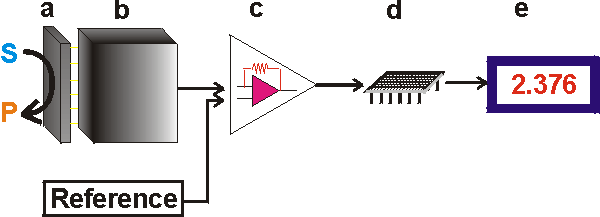
The basic electrochemical biosensor is pretty straightforward for both medical, and environmental/manufactering fields. The biosensor basically consists of hardware that manipulates the move of electrons (a computer) and a biological part that interacts with the specific environment surrounding it ( such as the human body).
On top is a simple biosensor:
A) This is the biological part of the biosensor. Often certain enzymes and/or antigens specific to a certain disease are combined with a polymer to form a stable mold in which molecules of that certain disease (such as a virus) will bond to.
B) and C) These are the inert metal based part of the biosensor. As with regular computer chips, microscopic conducting wires containing transistors monitor the flow of electrons. As the biological antigen on the biological part of the chip bonds with the desired molecule, the information that says the electrons have combined moves through parts B and C. An important thing to remember about the makeup of these parts is that very rare metals are often used, such as gold, because completely inert metals must be used, more so than a common computer chip. This inert property will allow the sensor to safely travel in a biological organism without interfering with chemical reactions
D) This is the processor located on the chip. Information in the form of 1's and 0's have traveled to this part of the chip. The processor compiles the information into a form that is understandable to humans.
E) This part of the chip is not necessary but is often helpful. The processor further refines the information from part d and will display the information in the form of words and/or symbols that can be easily read.